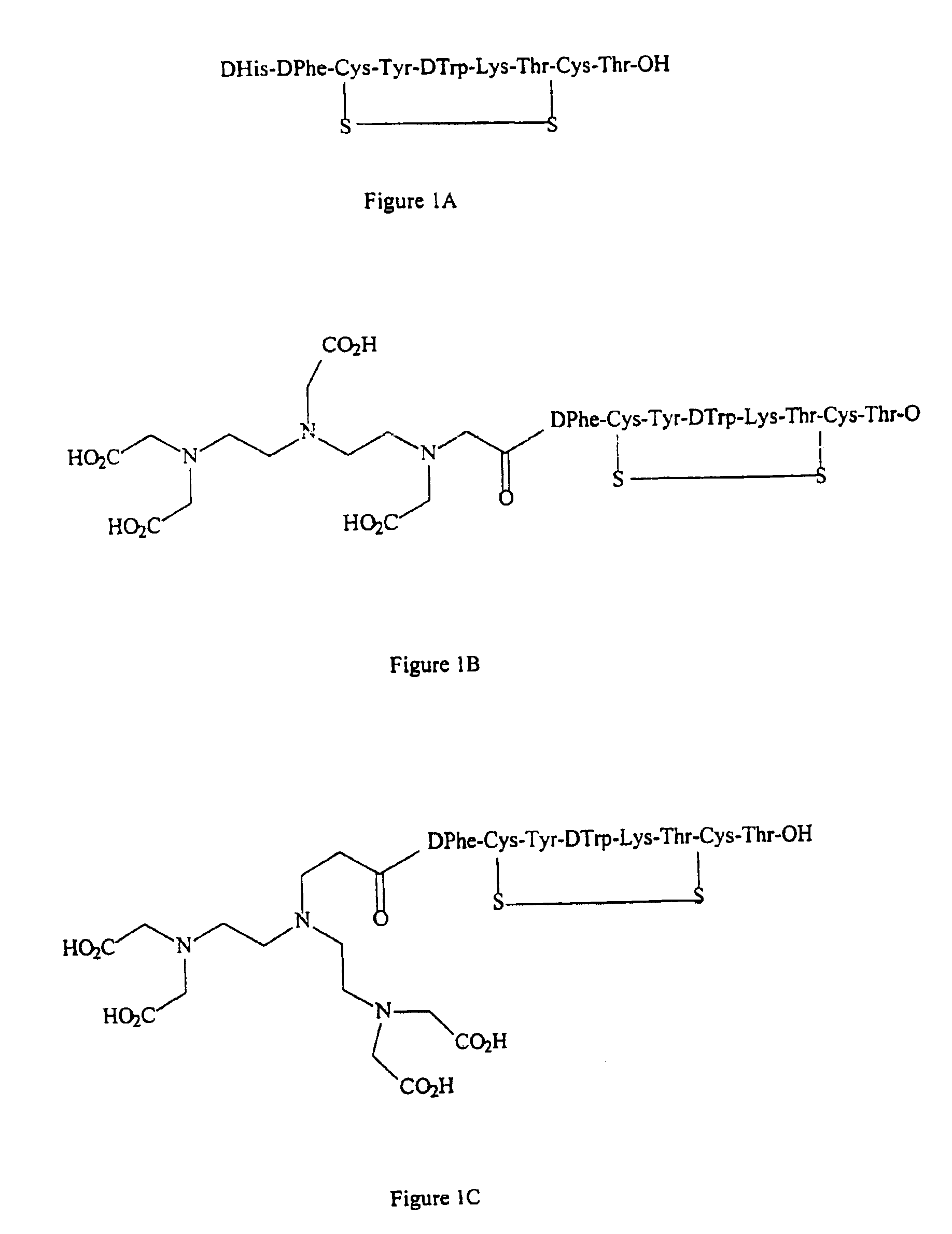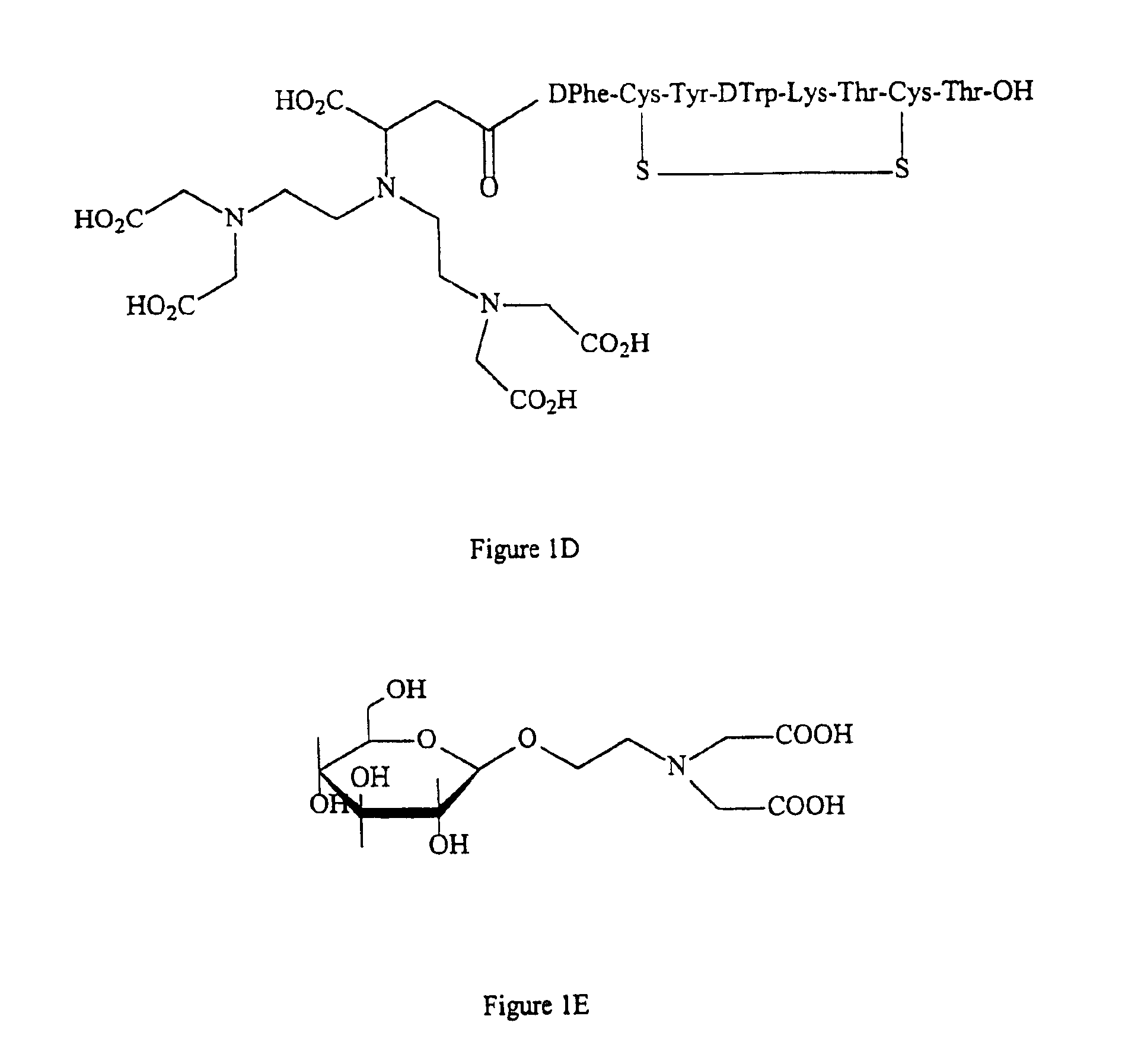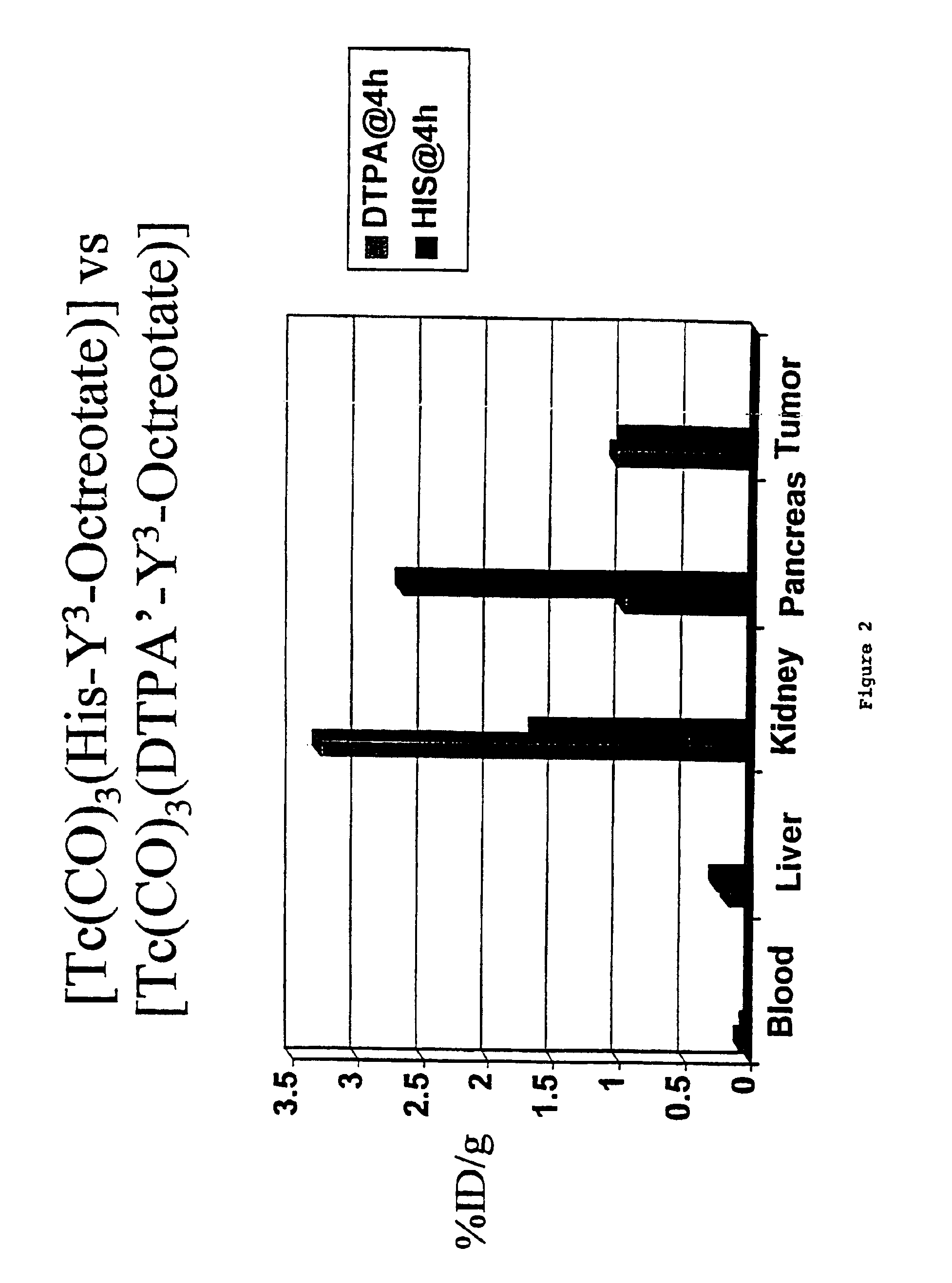Group (VII) transition-metal complexes with multidentate aminopolycarboxylate ligands and a kit for producing them
a technology of aminopolycarboxylate and complexes, which is applied in the field of ligands for forming radionuclide complexes, can solve the problems of high liver and blood uptake of the ligand, unstable technology of the scintigraphic imaging agent in the presence of oxygen,
- Summary
- Abstract
- Description
- Claims
- Application Information
AI Technical Summary
Problems solved by technology
Method used
Image
Examples
example 1
Synthesis of [99mTc(OH2)3(CO)3]+
[0065]In a 10 mL closable vial the following chemicals are put together. 5.5 mg of NaBH4, 4.0 mg Na2CO3 and 20.0 mg NaKtartrate. The vial is closed with a serum stopper and flushed for 10 minutes with carbon monoxide gas with the aid of a syringe. 3 mL of a 0.9% NaCl solution from a Mo-99 / Tc-99m generator, having an activity of about 100 mCi, is added via the septum and the vial is heated to 75° C. during 30 minutes and then cooled to room temperature. The product is analyzed by TLC on standard Merck silica gel plates with methanol / concentrated HCl=99 / 1 as mobile phase followed by analysis of the silica gel plate by means of a radioactivity scanner. The yield of the reduction of pertechnetate to facial [99mTc(OH2)3(CO)3]+ is >95% according to TLC. After neutralizing the solution with a solution of PBS (phosphate buffer (pH=7.4, saline 0.9%) a neutral physiological solution, suitable for labeling is obtained.
[0066]Table 1 shows that solutions of [99mTc...
example 2
Preparation of Radiolabeled Peptides
[0067]Complexes of [99mTc(CO)3(n-DTPA-Y3-octreotate)], [99mTc(CO)3(iso-DTPA-Y3-octreotate)] and [99mTc(CO)3(DTPA′-Y3-octreotate)] were prepared as described below in this Example. Although the three complexes discussed herein each comprise an Octreotate peptide, complexes with other biomolecules such as proteins, sugars, etc., can be made in a similar fashion. These include but are not limited to those peptides as discussed in WO 98 / 48848, e.g., antibodies, His-neurotensin, and scFv. The synthesis of the Tc-99m tricarbonyl octreotates was based on the following two step procedure.
[0068]
TABLE 1Preparation of [99mTc(OH2)3(CO)3]+ Under Different Reaction ConditionsVolumeTcO4-React.YieldStabilizingsol.ActivityTemp.time(TLC)Exp.agent(mL)(mCi)Solvent(° C.)(min.)(%) 1NaKtartrate3≈100H2O7530>95 2NaKtartrate3≈400H2O7530>95 3NaKtartrate3≈700**H2O7530>95 4NaKtartrate3n.d.*H2O7530>95 5NaKtartrate6n.d.*H2O7530>95 6***NaKtartrate3n.d.*H2O753040 7—3n.d.*H2O75307...
example 3
Preparation of Radiolabeled Biological Substrates
Using [99mTc(CO)3(OH2)3]+ and Aminopolycarboxylate Ligands
[0073]It was found in studies presented herein in Example 5, that the DTPA′-Y3-Octreotate has better biodistribution characteristics than do iso-DTPA-Y3-Octreotate and n-DTPA-Y3-Octreotate. Therefore additional studies have been performed with the DTPA′-Y3-Octreotate. This Example discloses minor variations of the methods of Example 2 for preparing this compound. These methods are preferred over the methods of Example 2 and we have found them to be preferable to the methods disclosed in WO 98 / 48848.
Step 1: Preparation of [99mTc(CO)3(OH2)3]+
[0074]To a 10 mL sealed tubing vial containing the following lyophilized formulation: 20 mg lactose H2O, 13 mg L-tartaric acid, 7.6 mg KBH4, borate buffer at pH=11.6, and carbon monoxide in the headspace, is added 2 mL of 99mTcO4− from a commercial generator (50-200 mCi). The vial is shaken vigorously for 30 seconds and placed in a boiling wa...
PUM
| Property | Measurement | Unit |
|---|---|---|
| molar ratio | aaaaa | aaaaa |
| molar ratio | aaaaa | aaaaa |
| molar ratio | aaaaa | aaaaa |
Abstract
Description
Claims
Application Information
 Login to View More
Login to View More - R&D
- Intellectual Property
- Life Sciences
- Materials
- Tech Scout
- Unparalleled Data Quality
- Higher Quality Content
- 60% Fewer Hallucinations
Browse by: Latest US Patents, China's latest patents, Technical Efficacy Thesaurus, Application Domain, Technology Topic, Popular Technical Reports.
© 2025 PatSnap. All rights reserved.Legal|Privacy policy|Modern Slavery Act Transparency Statement|Sitemap|About US| Contact US: help@patsnap.com



